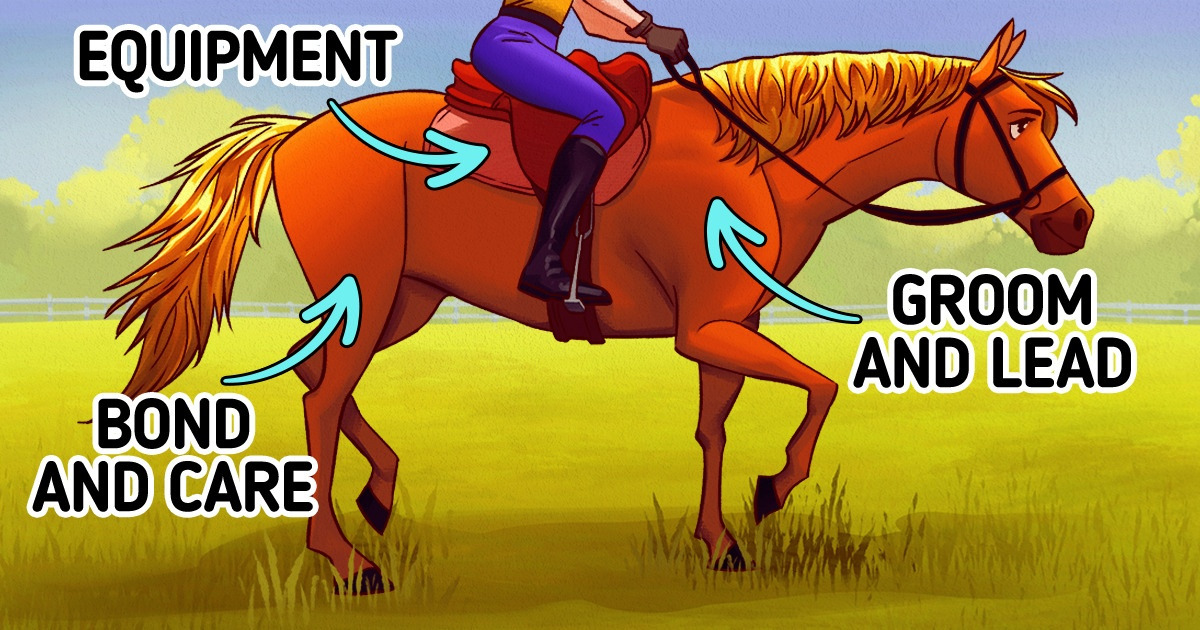
How to Ride a Horse Safely

Horseback riding is a sport that can be enjoyed when you want to connect with nature, feel free, and create a friendship with a horse. Learning how to ride a horse is good when done with a coach, who can teach you the must-dos, encourage you, and offer tips and advice to keep you safe and comfortable.
5-Minute Crafts is attempting to give you a leg up on the basics of riding a horse in addition to some helpful safety tips for you to take a look at.
❗ Important: All the information represented in the article is for informative purposes only, and before trying to ride a horse, it’s strongly recommended you consult with an instructor or coach first.
1. Learn to bond with your horse.
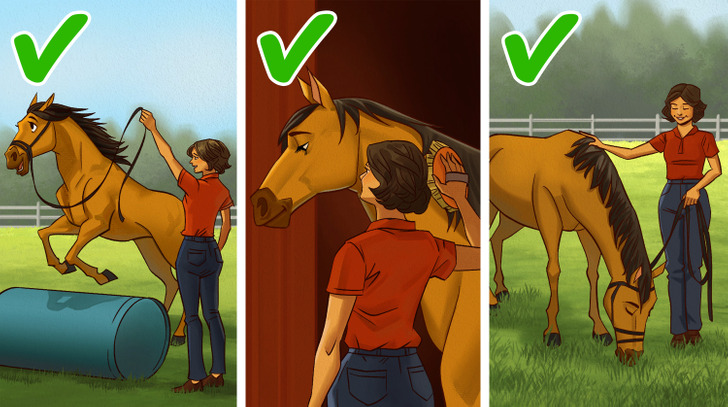
Spend time brushing, feeding, and cleaning the animal. Help your horse relax. For example, you can scratch his or her itches with a curry comb so it’ll feel relaxed and fresh.
Do groundwork exercises. These are exercises you do with your horse when you’re on the ground, standing. Keep things simple and slow in the beginning. It’s a good chance to teach new exercises before trying them in the saddle. Once your horse does it all well, then you can advance to a higher-level groundwork technique. These exercises will help your horse accept you as a leader.
Manage your emotions around your horse. Horses are emotional creatures and can easily pick up on any emotions present around them.
Spend quality time with your horse. Take time to talk to your horse. Because they love constant actions, make sure that you’re providing the same thing, regardless of the circumstances.
2. Wear proper horse riding equipment.
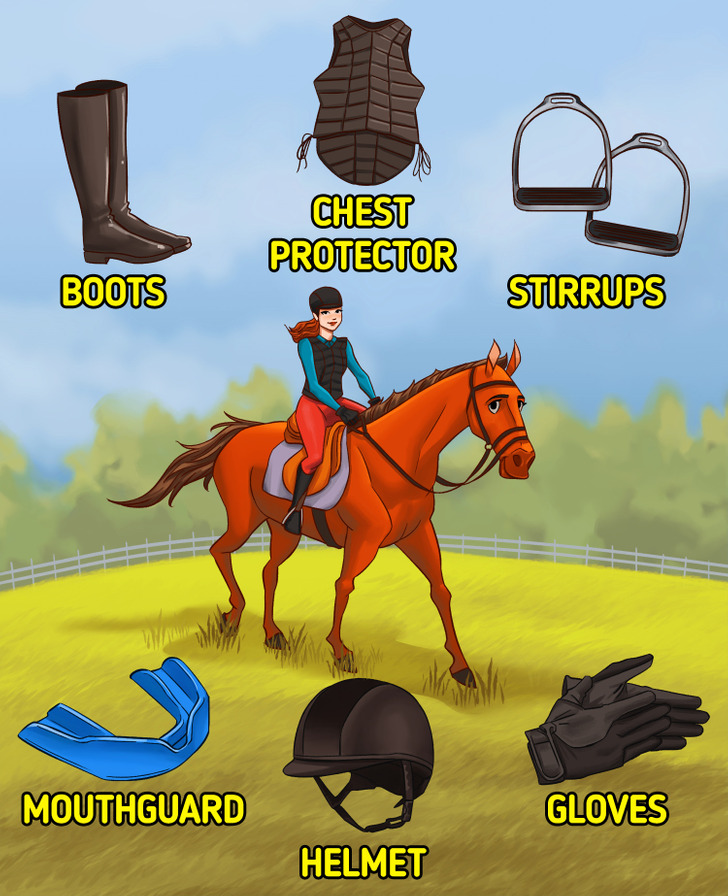
Always opt for helmets that fit, and use a chest protector and a mouthguard. To avoid your feet from slipping through the stirrups, long pants and proper footwear, such as a pair of low-heeled boots with 1-inch to 1.5-inch (2.5 to 4 centimeters) heels are essential.
- Flip-flops, high heels, etc. aren’t okay for riding. Accessories like scarves, purses, and such aren’t recommended, as they can get tangled in the reins, saddle, bushes, or trees.
3. Saddle up correctly.
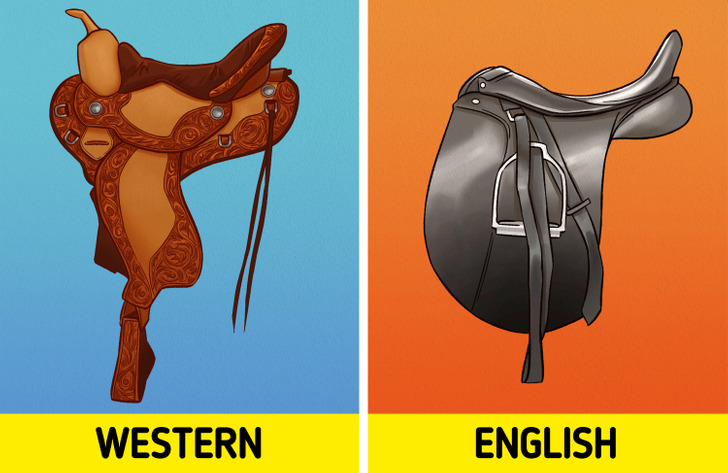
There are 2 main horseback riding styles: Western and English. The basics of putting on an English or Western saddle and bridle are similar but have a slight difference.
- For example, the English saddle is smaller and lighter than the Western saddle, which keeps the rider’s body closer to the horse. Because the Western saddle is larger and heavier, it makes the rider sit comfortably over a large surface.
- While Western-style saddles require you to hold the reins loosely in one hand, you must hold the reins with 2 hands while on an English-style saddle.
4. Learn to mount up on the horse.
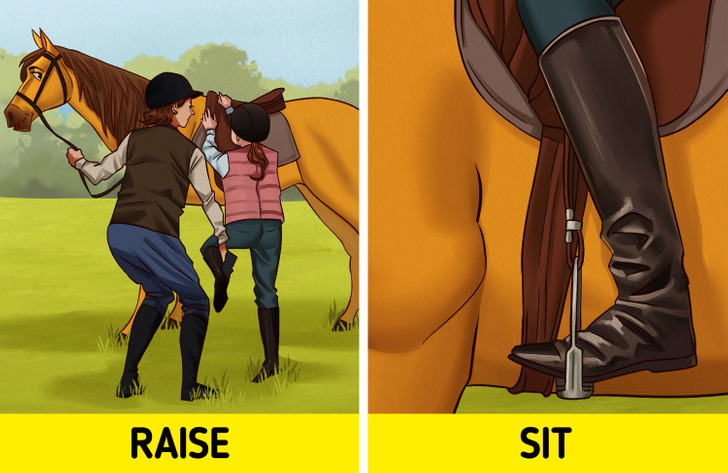
If you’re nervous when mounting up, your horse will feel it. Raise your left foot into the stirrup. Then, using your left hand, hold both reins. Smoothly set yourself up in the motion with your right leg. Ensure the horse doesn’t move until you sit correctly in the saddle. Also, don’t push the horse with your arms while mounting up.
5. Practice walking and halting your horse.
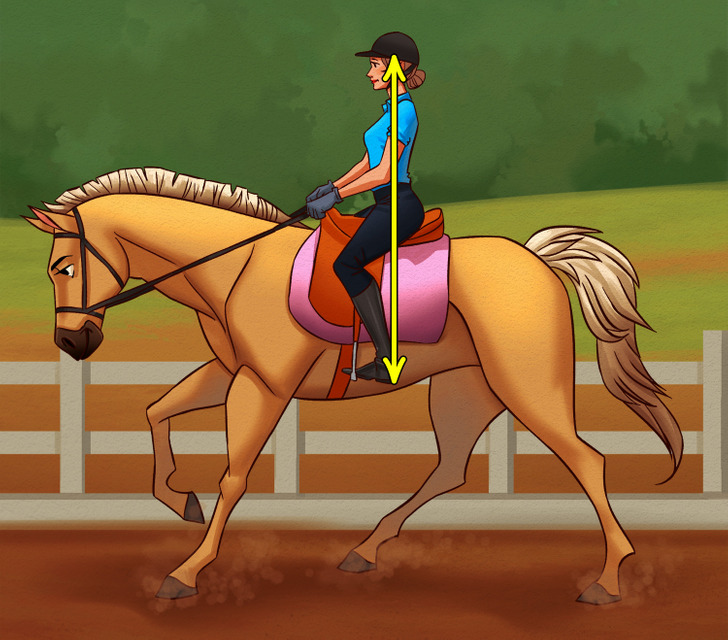
Relax as much as possible if this is your first ride. It may take some time to get used to the motion of the horse. Once you’ve successfully gotten up into the saddle, make sure your arms, shoulders, head, etc. are in the right positions. Walk forward and halt a few times to understand if your horse is responding right. Then practice walking forward as the horse walks forward. The key is practice. After some time, turn around and walk forward again.
6. Familiarize yourself with riding safety.
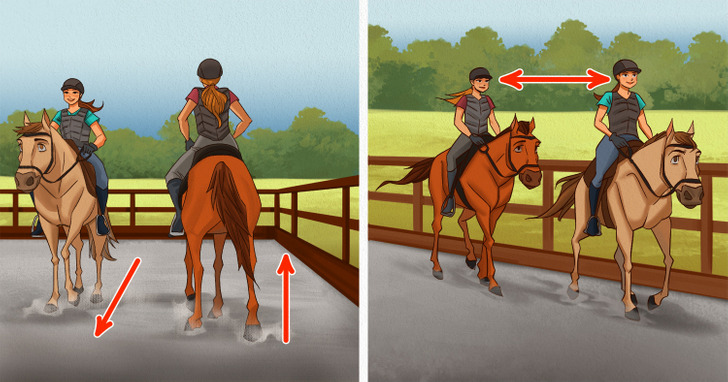
Just like how the roads have guidelines and traffic rules, arena etiquette ensures a safe place for the riders too. As such, it prevents the horses from getting too close. Therefore, it’s better to follow the same safety rules on a trail. If you happen to ride in the dark, choose the roadsides to stay safe.
7. Care for your horse after your ride.
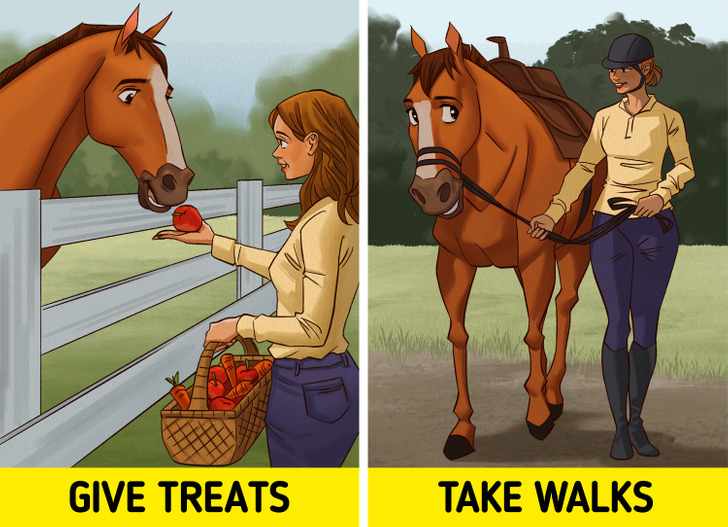
Look after your horse even after both of you have finished your ride. This way, your horse won’t feel uncomfortable. Care for your horse; groom and cool it down with a hose. Feed it, offer it water, and even reward it with safe treats. Stretch your horse’s legs and look for any swollen or scratched areas, then groom further. Take a walk together.